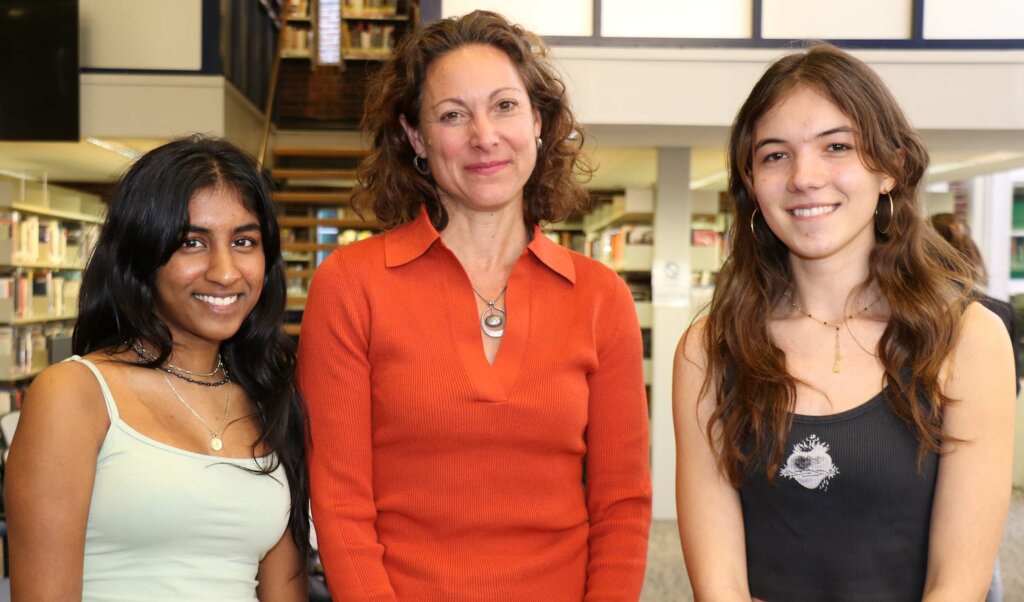News
NY Times Reporter Visits Students
“I want my stories to make people think.”
Journalist Emily Bazelon, New York Times Magazine staff writer, came to Poly on February 15 to discuss journalism, free speech, disinformation, and more in the library after school. Bazelon talked about her process as a journalist with Rachael Allen’s Advanced Journalism class. Afterward, Bazelon discussed her New York Times feature “on free speech in an age of disinformation”, moderated by a student panel.
Journalism class students Charlotte Roberts ’24 and Jesse Cavaliero ’23 moderated the early session with journalist Bazelon.
Bazelon, who grew up in Philadelphia, explained that she decided to become a journalist in college because she loved storytelling. She went to law school, but realized that was not the career path for her. After working for the Tri-Valley Herald in Livermore, CA for a year, she went to SLATE, an online news magazine. Bazelon has been on the staff of The New York Times for the past nine years and is also the host of a podcast, Political Gabfest.
Following the Story
Her work is very reporting driven, she said, and she follows where the story takes her. Sometimes, she may be surprised where it does take her. “Take the reporting where it goes,” she said, “That’s the difference between journalists and advocates.”
On Social Media
About social media, Bazelon said, “Anyone can get on Twitter…. Journalists can be subject to ‘group think,’” she warned and added, “There are no editors in social media.”
Charged
Roberts asked about Bazelon’s story about “Gun Court.” Bazelon talked about following the case of one young man she called “Kevin.” Even though she did not want a law career, the knowledge she had gained in law school gave her an understanding of the legal system. Read more about Charged.
Student Q&A
How does Bazelon deal with backlash from one of her stories? “It’s important for journalists to take in criticism,” she said. “Hear the criticism, but don’t let it eat away.” She added that when one of her pieces is published she feels very vulnerable.

Afterward, Roberts said she appreciated how Bazelon opened up about her initial struggles with confidence as a journalist. As a student journalist myself” Roberts said, ”I sometimes find that I have doubts about my work, and it was helpful to hear that someone as successful as Ms. Bazelon has also experienced that.”
Cavaleiro asked about an abortion rights story Bazelon had written and how she maintains relationships with sources. “Have some distance,” Bazelon counseled. “People have to understand that they are talking to a journalist.” She said she keeps her recorder out in plain sight so there is no question that the conversation is being recorded. “Try to only tell personal stories when they really want to tell them.” Once the story is in The New York Times, she said, “It changes their lives.”
A student asked Bazelon how she organizes her stories—some as long as 7,000 words—while working on them for months. She suggested breaking up a story into sections and “taping almost everything.”
“I want my stories to make people think,” Bazelon told the young journalists. She wants the reader to have the same interest she had in the story, “I want to take you to a place and see what I am seeing.”



